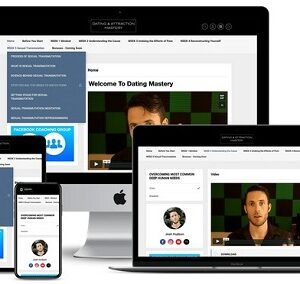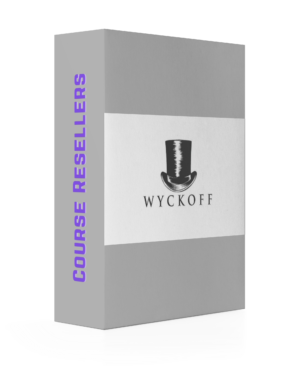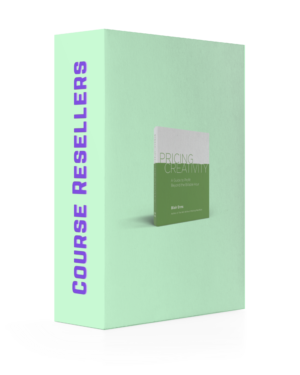Tommy Geoco – Making UX Decisions
Tommy Geoco – Making UX Decisions course is now available at an affordable price. You can check out directly using multiple payment gateway options. If you have any questions or need an alternative payment method, feel free to contact us.
Tommy Geoco: Making UX Decisions: A Complete Guide on User Experience
Introduction
Creating interesting and efficient interfaces in the fast-paced field of digital design now depends on knowledge of user experience (UX). UX designers are in great demand as mobile apps and websites have proliferated. A survey of the User encounter Professionals Association (UXPA) indicates that 88% of internet users are less inclined to visit a website after a poor encounter. This number by itself emphasizes the vital need of basing UX choices on knowledge. Tommy Geoco – Making UX Decisions will guide us through the realm of UX design in this blog post, revealing techniques, advice, and insights that will help you improve your design processes and produce user-friendly experiences.
The Value of User Perception
Reasons UX Matters
Any effective digital product is built on user experience, not just a hip phrase used in IT circles. Enhanced customer happiness, more conversions, and finally better income follow from a pleasant UX. A Forrester Research analysis indicates that every dollar spent on UX returns $100, or an incredible 9,900% ROI. These kinds of figures show how clearly ignoring UX may hurt your company.
Analyzing Your Users
First you have to know who the user is before you can design with them in mind. Finding the wants, tastes, and pain issues of your target audience requires user research. Excellent means of obtaining insights include surveys, interviews, and usability testing. Assuming the position of your users will help you to make wise judgments that speak to them.
Important UX Design Ingredients: Usability
Usability of a product is its simplicity and ease of use for consumers. It covers a wide spectrum including learnability, efficiency, and mistake avoidance. According to a Nielsen Norman Group research, consumers should be able to reach their objectives with no effort at all. Your design should so be simple and call for minimal explanation.
Interactions Design
Interaction design focuses on user interaction with your product. This covers buttons, icons, and navigation among other things. The Interaction Design Foundation claims that up to thirty percent of user happiness may be raised by a well-designed interface. Thus, it is essential to design interactive components that lead consumers effortlessly over their path.
Architectural Information Technology
Content arrangement within your digital product is known as information architecture (IA). A well-organized IA facilitates users’ fast and simple information search. On a website, the typical visitor spends only 15 seconds determining whether to remain or go. Should your material be disorganized, visitors might become annoyed and leave your website. Use logical hierarchies, simple labels, and easy navigation to help to prevent this.
Designing UX: Tommy Geoco Method
Effective UX design revolves mostly on data-driven decision-making. Data collection and analysis helps you to spot trends and patterns that guide your design decisions. User activity may be quite well shown by tools as Google Analytics, Hotjar, and Crazy Egg. Heatmaps, for example, may show you where people most typically click on your website, thereby enabling you to maximize critical content sections and CTAs.
Development and Testing Prototypes
Create prototypes after you know your consumers and the facts to back up your choices. Prototyping lets you rapidly test concepts without devoting excessive time or money. Companies that prototype raise their design quality by 60%, according the “Design Better” research by InVision. Real user testing of these prototypes will provide you quick comments and enable you to improve your design before release.
Method of iterative design
The iterative design process is a cyclical one requiring constant testing, learning, and design improvement. This method lets one be flexible and adaptable depending on user comments. Teams using an iterative design approach are 25% more likely to reach their project objectives, according a research by the Stanford d.school. Accept the knowledge that your initial effort is just the start and be ready to modify depending on comments.
UX Design Challenges: Juggling Business Objectives with User Needs
Finding the ideal balance between satisfying consumer requirements and reaching company goals is one of the toughest problems in UX design. While developing a product that consumers like is crucial, you also have to take corporate objectives and financial restraints into account. Making ensuring all parties are taken into account throughout the decision-making process depends on cooperation between UX designers and stakeholders.
Following Current Trends
The digital terrain is always changing, hence designers have to remain current with the newest UX trends and best practices. A UX Design Institute survey indicates that maintaining industry trends is a major difficulty for seventy percent of designers. Frequent attendance of conferences, webinars, and seminars can help you keep ahead of the curve and motivate fresh ideas for your design process.
In essence
Although creating outstanding user experiences is no small task, you can improve your design game with the correct techniques and Tommy Geoco’s insights on Making UX Decisions. Understanding the value of user experience, using data, and adopting an iterative design approach can help you to make wise choices that result in happy consumers and successful products. Great UX design, therefore, is mostly about empathy and knowing your consumers’ requirements.
It’s time to use your newfound awareness of the basic elements of UX decision-making. Explore our other blog entries on coursesfast.com to delve further into the realm of user experience, or think about enrolling in one of our courses to improve your abilities even more. Learning UX design is an ongoing process; the road towards mastery simply starts.
All set to bring your UX design abilities to the fore? Come see us at Tommy Geoco – Making UX Decisions to enable you to develop user-centered experiences driving outcomes!
Sales Page
Delivery Policy
When will I receive my course?
You will receive a link to download/view your course immediately or within 1 to 24 hrs. It may takes few minutes, also few hours but never more than 24 hrs. Due to different time zone reasons.
How is my course delivered?
We share courses through Google Drive, so once your order is complete, you’ll receive an email with a google drive folder access link to view the course in your email.
To avoid any delay in delivery, please provide a Google mail and enter your email address correctly in the Checkout Page.
In case you submit a wrong email address, please contact us to resend the course to the correct email.
Where can I find my course?
Once your order is complete, a link to download/view the course will be sent to your email.





